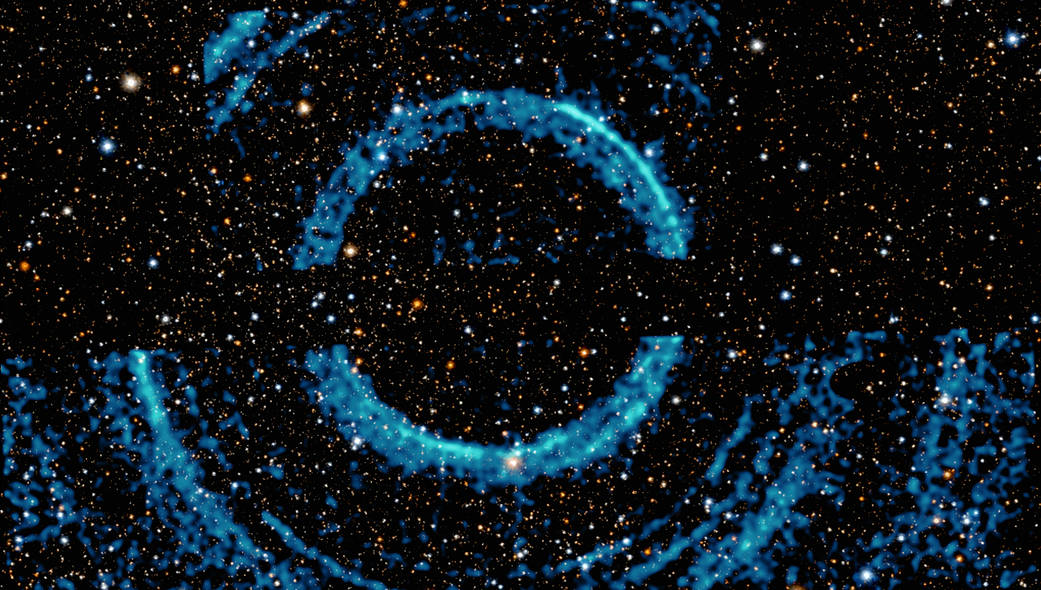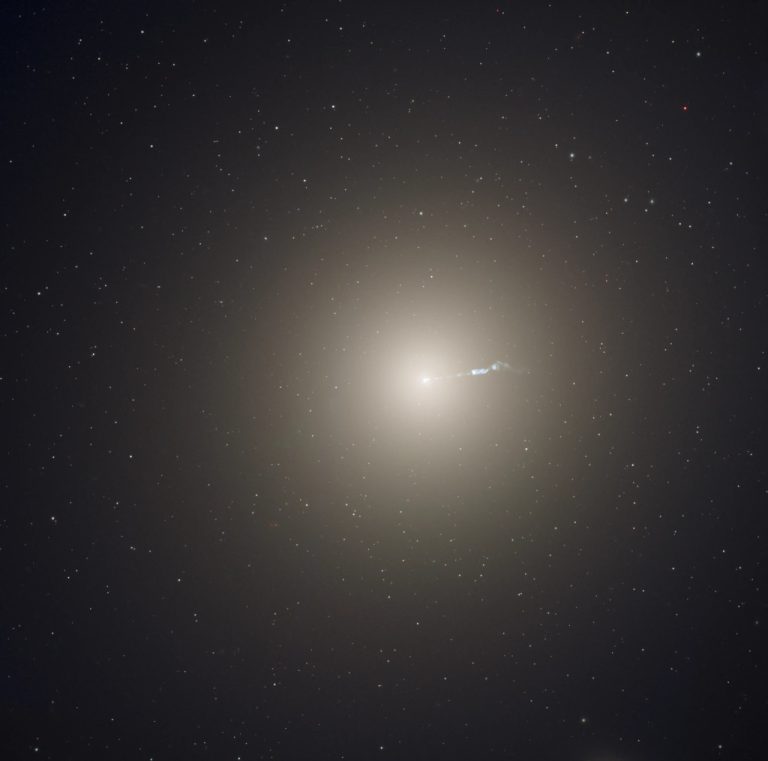This image features a spectacular set of rings around a black hole, captured using NASA’s Chandra X-ray Observatory and Neil Gehrels Swift Observatory. The X-ray images of the giant rings reveal information about dust located in our galaxy, using a similar principle to the X-rays performed in doctor’s offices and airports.
The black hole is part of a binary system called V404 Cygni, located about 7,800 light years away from Earth. The black hole is actively pulling material away from a companion star — with about half the mass of the Sun — into a disk around the invisible object. This material glows in X-rays, so astronomers refer to these systems as “X-ray binaries.”
Image Credit X-ray: NASA/CXC/U.Wisc-Madison/S. Heinz et al.; Optical/IR: Pan-STARR
这张图片展示了一组壮观的黑洞周围的光环,由NASA的钱德拉X射线天文台和尼尔·盖勒斯·斯威夫特天文台拍摄。巨大光环的X射线图像揭示了我们银河系中尘埃的信息,其原理与在医生办公室和机场进行的X射线相似。
该黑洞是一个称为V404 Cygni的双星系统的一部分,距离地球约7,800光年。黑洞正积极地从一颗质量约为太阳一半的伴星上吸走物质,形成一个围绕着这个看不见的物体的圆盘。这种物质会发出X射线,因此天文学家将这些系统称为“X射线双星”。
图片来源:X射线:NASA/CXC/U.Wisc-Madison/S. Heinz et al.; 光学/红外:Pan-STARR







